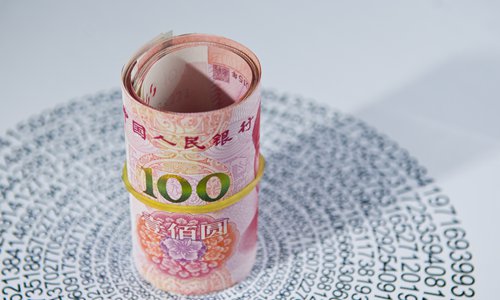
File photo: IC
Research into a national digital currency, as mentioned in a central government document on Shenzhen's development, will start soon under the guidance of China's central bank.In the document released on Sunday on building Shenzhen city, South China's Guangdong Province, into a pilot demonstration area of socialism with Chinese characteristics, such innovative applications as digital currency research and mobile payments will be supported to develop in the city.
It is not clear what kind of digital currency research will be carried out by the local government of Shenzhen although analysts said the new project is related to the legal digital currency supported by the People's Bank of China (PBC), the central bank.
The PBC calls the new unit "digital currency for electronic payments" (DC/EP).
"Shenzhen was selected as a pilot area to conduct the research since it is an ideal place featuring a cluster of blockchain companies with advanced technologies and innovative ideas," said Huang Zhen, a professor at the Central University of Finance and Economics.
Blockchain, a digital, public ledger that records online transactions, is a major technology to develop digital currency.
In June 2018, the PBC established the Shenzhen Financial Technology Co, which is wholly-owned by the state.
Shenzhen can also play a key role in connecting the Hong Kong Special Administrative Region (SAR) and Macao SAR within the grand landscape of the Guangdong-Hong Kong-Macao Greater Bay Area as the SARs are conducive for the Chinese currency to go global, Huang told the Global Times on Wednesday.
"In terms of technology and a talent pool, China is ready to unveil the digital currency," Huang noted.
Mu Changchun, deputy director-general of the payments and settlement department at the PBC, told an industry forum on August 10 that the PBC has conducted research on DC/EP since 2014.
As of August 4, the PBC had applied for 74 patents involved with DC/EP to the National Intellectual Property Administration.
"At the current stage, the DC/EP's design is focused on replacing M0 instead of M1 and M2, because the latter two have already realized digitalization," Mu said.
M0 money supply is usually defined as currency in circulation, while M1 is calculated as M0 plus demand deposits. M2, known as broad money supply, includes a much broader range.
Chinese authorities ordered a ban on initial coin offerings in 2017 and stopped direct bitcoin-yuan trading as the rapidly expanding market spawned concerns over financial risks.
Many central banks are accelerating moves into digital currencies, given that some companies have already made forays into the sector.
US retail giant Walmart has reportedly filed a cryptocurrency patent to develop a US dollar-backed digital currency similar to Facebook's Libra. In June, Facebook released an official white paper for its cryptocurrency project Libra, a blockchain-powered stablecoin expected to be launched in 2020.

